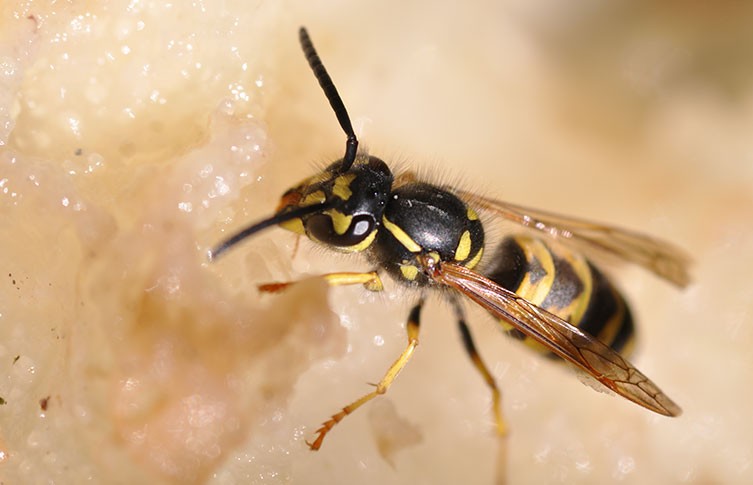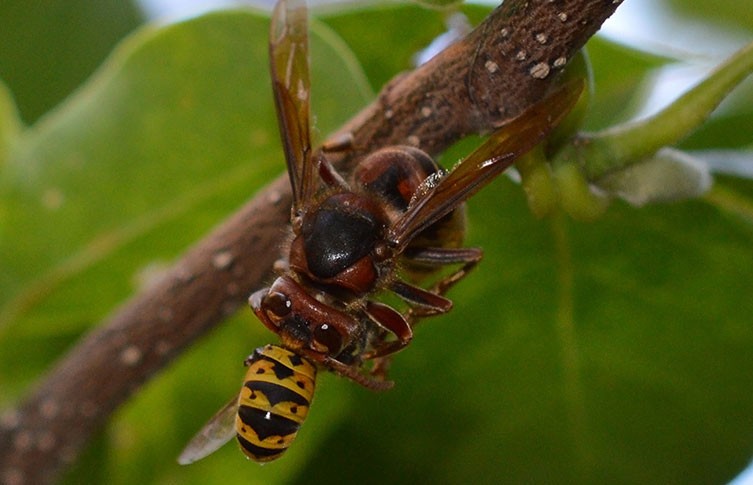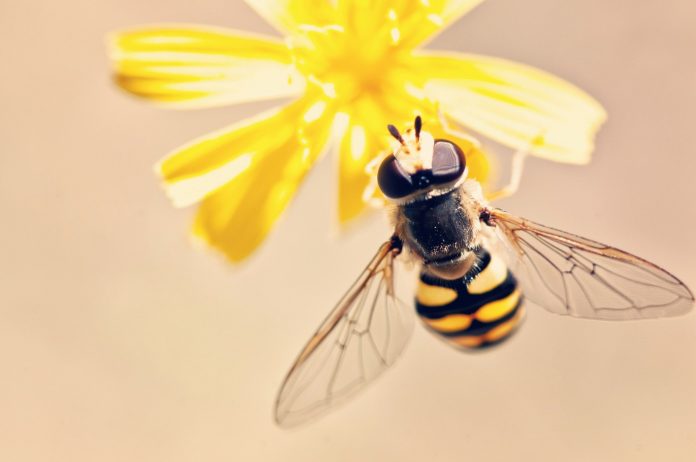Wasps have generally earned themselves a bad reputation. But despite their occasional aggression, these insects play an important role in the ecosystem.
There are over 7,000 wasp species living in the UK, comprising a huge variety of solitary and social species. The majority are parasitoids, which have young that eat insects or spiders alive. However, the most commonly seen wasps are the black and yellow social species.
Colonies of social wasps are considered annoying pests – they often nest in manmade structures and deal out painful stings if you get too close. Yet despite our grievances, the ecosystem actually relies on these underappreciated insects.
So what are the benefits of wasps?
Natural pest control
Wasps are probably best known for disrupting summer picnics, but they are actually very important in keeping the ecosystem balanced.
Without wasps, the world could be overrun with spiders and insects. Each summer, social wasps in the UK capture an estimated 14 million kilogrammes of insect prey, such as caterpillars and greenfly. Perhaps we should be calling them a gardener’s friend.

Read more
Dr Gavin Broad, a wasp expert at the Museum, says, ‘Wasps are generally apex predators – so if they’re not doing well, it indicates that there is something wrong with the world.’
Wasps are hugely beneficial to their native ecosystems due to the sheer amount of insects they capture. But their voracious appetites can cause problems if a species spreads or is introduced to new areas and their numbers aren’t kept under control, such as in New Zealand, where there are no native social wasps.
‘Where common and German wasps have been accidentally introduced to New Zealand, they’ve been stripping caterpillars out of forests. This is having a huge ecosystem impact and the native birds have been declining.’
What do wasps eat?
Adult wasps don’t eat the prey they kill – they feed it to their young. Social species capture insects, chop them up and carry parts back to the nest.
Some solitary species are more sinister. For example, most spider wasps paralyse arachnid prey using a venomous sting. Their larvae then eat the victim alive. There are almost 5,000 species of spider wasp worldwide, including 44 species in Britain.

Read more
Instead of eating insects and spiders, adult wasps – both social and solitary – only feed on sugars. In the wild, sugars come from flower nectar and honeydew produced by aphids. Wasp larvae also produce a sugary liquid that the adults consume.
‘There is also a lot of sugar at pubs and picnics. Adult wasps don’t live very long, so they don’t really need protein. They’ve just got to load up on carbs,’ explains Gavin.
When on the hunt for nectar, wasps can also become accidental pollinators by travelling from plant to plant carrying pollen. While their contribution to pollination may not be as substantial as bees’, wasps still play a valuable part.

Read more
Where do wasps go in winter?
The lives of wasps in the UK are dictated by the seasons. They need large amounts of insects to feed their young, so are only active in the warmer months, when food is readily available.
The worker wasps of social species die off late in autumn, while recently emerged females hibernate. They spend the cold months in sheltered areas such as lofts and animal burrows.
But only some survive the chill. Those that do emerge when the weather warms up begin to form new colonies. After building a small nest, the new queen lays eggs of the first workers.

Read more
Gavin says, ‘At the beginning of April and May the colony is really small, with just a few workers. Growth is slow until you get to a certain mass, then it’s almost exponential growth.’
As the colony increases in size, so does the ability of the workforce to forage and feed the young, thus maintaining a cycle of growth.
Ancestors of the wasps most commonly found in the UK nested in cavities. This has resulted in species that thrive in manmade structures such as sheds and lofts. This sometimes makes wasps a pest problem when the colony mass increases.
But in Britain, colonies never reach their full potential as their growth is curtailed by winter. In parts of the world where winters are milder, colonies can continue to grow.
‘I think the biggest common wasp nests are in Australia,’ says Gavin. ‘There can be as many as two million workers. When you get a huge nest, you can imagine the large biomass of insect prey they’re taking in.’

Read more
Why do wasps sting?
Wasps use their venomous sting to subdue prey and defend their nest. They also use it to defend themselves.
Wasps sometimes sting us as they see us as a probable threat, even if we don’t really pose one.
Unlike honey bees, wasps don’t lose out by stinging us. Honey bees sacrifice their lives as their stings have a set of tiny barbs that hook into the skin.
‘Honey bees have weak attachments in their abdomen. So when it pulls away the sting remains attached to you and it basically pulls away the entire muscle system around the sting. It’s a bit brutal,’ explains Gavin.
Wasps have smooth stings that can easily be pulled out of the skin by the insect – with the exception of a few South American species. If they run out of venom, they simply make more.

Read more
Common British wasps
If you see a wasp in Britain, it will most likely be either the common wasp (Vespula vulgaris) or the German wasp (Vespula germanica). These species are very similar in size and colour – predominantly yellow with black markings.
Gavin adds, ‘The red wasp (Vespula rufa) and the tree wasp (Dolichovespula sylvestris) are also common. The Saxon wasp (Dolichovespula saxonica) only arrived in Britain in the 1980s and it’s mainly common in the south.
‘The European hornet(Vespa crabro) is quite common in parts of the south, but it is more of a woodland species,’ says Gavin.
The European hornet is the UK’s only native hornet species and is the largest of our social wasps. Their bodies are also yellow with a dark pattern – although it has a sting that is more painful than other social wasps in Britain, usually leaving the stung area throbbing for a few hours.

Read more
Although wasps may cause us strife in the summer months – and leave some to question the point of them – these insects play a crucial role in maintaining harmony in the ecosystem. We certainly would not be able to cope in a world without them.
Emily Osterloff
Source: National History Museum
Read more:
Stinging wasps are precious, not pointless, say scientists
PLEASE SUPPORT US FOR JUST £2 A MONTH







